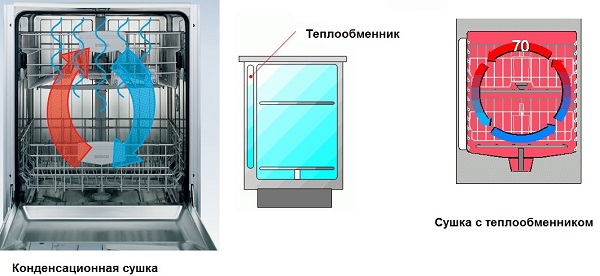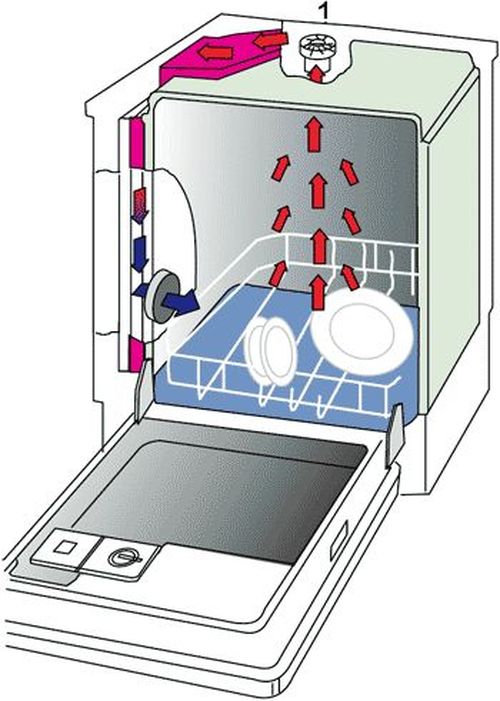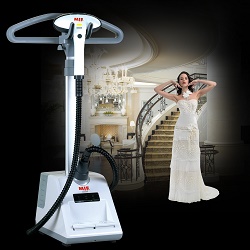Types of drying in the dishwasher
In appliance stores, customers often have a question: what type of drying in the dishwasher is better? In various models there is usually one of three types of drying:
- condensation;
- intensive;
- turbo.
Depending on what the customer most appreciates: speed, energy savings or new technologies, this or that drying class used in the dishwasher will suit him. Let's try to understand in more detail what the advantages and disadvantages of each of them are.

Condensation drying
Condensation drying in the dishwasher has been used for quite some time. This type was used in the very first models of dishwashers with drying due to the simplest mechanism of action. The condensation process is as follows:
- At the very last stage of the washing program, clean dishes are boiled over with boiling water.
- The resulting couples sit on the upper cold walls of the car. There they condense back into water droplets.
- Drying dishes occurs in conditions close to natural.
As a result, the process of evaporation of moisture proceeds rather slowly, and traces are often noticeable on the dried dishes. Meanwhile, condensation dishwasher models have more low price compared to others. Another advantage is their low power consumption.

Turbo dryer mode
The device of dishwashers with drying in turbo mode is more complex. In addition to the usual parts, they have a heating element for the production of hot air and a fan for blowing out damp dishes. Turbosushka proceeds in the following way:
- TEN and the fan which are in the chamber protected from moisture provide continuous supply of hot air.
- This stream of air continuously blows on wet dishes and dries it.
It is not difficult to guess that a dishwasher equipped with a turbo dryer is much faster to cope with the task: the model is good for those who want to get the fastest result. However, this technique will have to pay a lot more than for a model with a capacitor, and it will more strongly wind electricity.
The design of the dryer has additional parts needed for the production of hot air, so the probability failure one of them is high. If the heating element burns down or the fan breaks, the dishwasher will not dry the dishes due to a violation of the optimum temperature.

Machine with turbo dryer
Intensive heat exchange drying mode
In order to reduce the cost of dishwashing machines, manufacturers decided to use the laws of physics of heat exchange processes in some models for the drying process. So there were machines with an intensive type of drying. The principle of their work is as follows:
- Water enters the cold chamber of the catchment basin, and air flows through special openings into the adjacent chamber.
- Due to the temperature difference between the water tank and the walls of the washing cabinet, there is a pressure difference that causes the incoming air to circulate.
- Intensive movement of air dries moisture on the dishes.
Thus, in a dishwasher with a heat exchanger there is no heating element and a fan. The improved device, which appeared relatively recently, has made it possible not only to cheapen the device, but also to ensure that it consumes as little electricity as possible.
In addition to the types of drying in the dishwasher, they are also distinguished. classes. The letter designations "A" and "B" can often be found in the description of the characteristics of dishwashing machines. Drying top class "A" provides completely dry dishes, class "B" allows for the presence of some moisture.
And very often the dishwasher does not dry the dishes because of wrong boot or overloading the washing cabinet. In order for the device to serve for a long time, not to break and to cope well with its functions, it is necessary to follow simple rules for its operation.

/rating_off.png)











